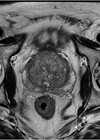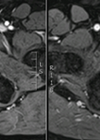Features archive for November 2016
The assessment and medical treatment of LUTS secondary to BPH
The term benign prostatic hyperplasia (BPH) describes prostate enlargement due to non-cancerous processes. Several aetiological mechanisms are involved, including hormonal and vascular alterations; abnormal regulation of apoptosis; and prostatic inflammation, which may stimulate cellular proliferation. With ageing, prostate enlargement can...
Focal therapy for prostate cancer – ready for prime time?
The current therapeutic ratio for radical therapy in many men with localised prostate cancer is not ideal. For a significant side-effect profile, there seems to be a small survival benefit over a 10-15 year period. A strategy that might balance...
An update on antibiotic prophylaxis in TRUS-guided prostate biopsy
Since its inception in the 1980s, transrectal ultrasound (TRUS)-guided prostate biopsy has remained the standard tool for the histological diagnosis of prostate cancer. There are several advantages to this technique which have led to the widespread use of TRUS in...
ICS updates in continence care: the role of the nurse continence specialist in continence services
The nurse who specialises in continence care is recognised as a key member of interdisciplinary teams seeking to deliver high quality integrated continence services. The recently published international service specifications for continence care [1] supports the use of specialist continence...
Indeterminate renal lesions – a pragmatic imaging approach
The incidence of renal cell carcinoma (RCC) in the UK has increased steadily over the last two decades, largely driven by the increasing use of abdominal imaging and the incidental detection of small renal lesions [1]. The majority of incidental...








